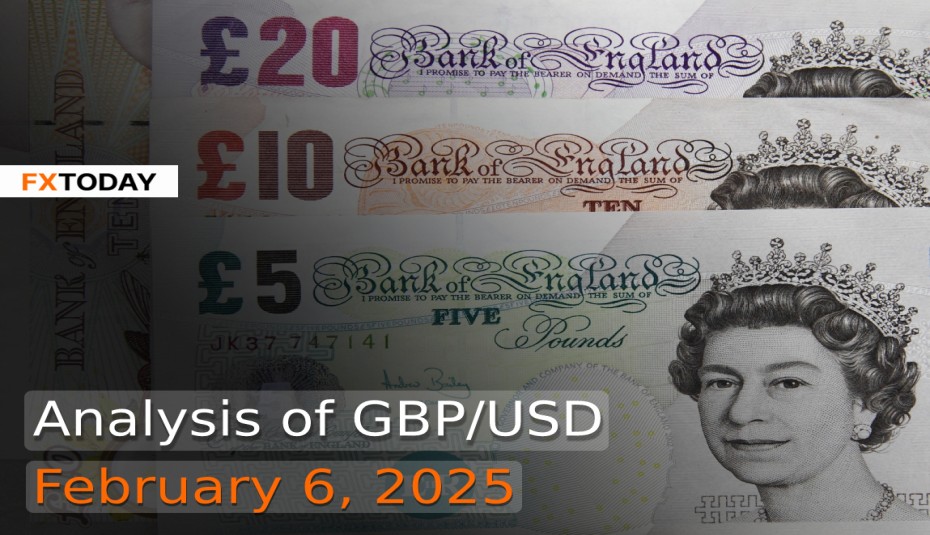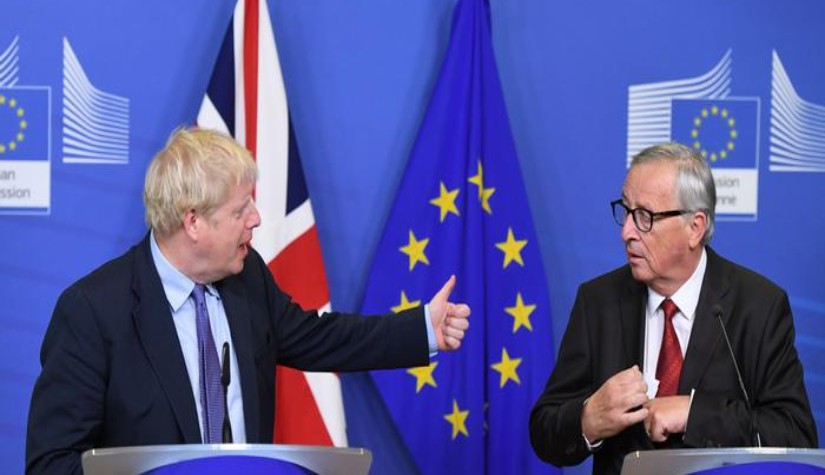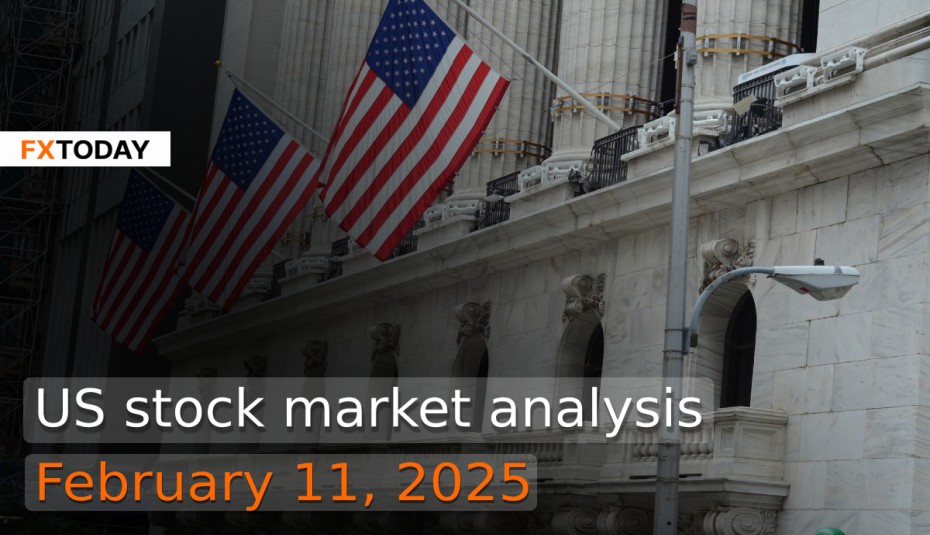BoE Set to Cut Rates as UK Economy Struggles, USD Likely to Strengthen
The Bank of England (BoE) is expected to lower interest rates on Thursday, marking only its third cut since the onset of the COVID-19 pandemic in 2020. This move comes as policymakers attempt to balance the need for economic support against persistent inflation. The UK economy has struggled since mid-2024, hindered by concerns over tax increases for businesses, potential global trade conflicts, and rising costs. While the BoE's benchmark rate remains at 4.75%, the highest among major economies, a widely anticipated quarter-point cut would bring it closer to U.S. and Norwegian levels.
The UK economy showed slight improvement at the start of 2025, with business activity inching up, but employment and business confidence continued to decline. The latest Purchasing Managers’ Index (PMI) indicated weak growth, though slightly better than economists’ expectations. However, rising costs and a deteriorating job market, exacerbated by recent tax hikes on employers, remain key concerns. Retail sales dropped sharply in January, and consumer confidence plunged. Many firms attributed job cuts to higher social security contributions, with layoffs accelerating at the fastest rate since the 2009 financial crisis, excluding the pandemic period. Inflationary pressures on businesses also intensified, further complicating the BoE’s upcoming rate decision.
Economic forecasts for the UK have been revised downward, with Morgan Stanley lowering its 2025 growth projection to 0.9%, down from a previous estimate of 1.3%. This is significantly below the BoE’s forecast of 1.5%, which factors in short-term boosts from increased public spending. Britain’s economy stagnated in late 2024, and signs of continued weakness have led investors to anticipate two to three interest rate cuts in 2025. Despite a slight recovery in the services sector, manufacturing remains in decline, with factory job cuts accelerating. Rising input costs, driven by raw material and transport expenses, are likely to influence the BoE’s policy decisions.
The UK’s sluggish economy is also impacting investor sentiment. British businesses remain pessimistic, with confidence levels falling for the fifth consecutive month. The Confederation of British Industry (CBI) reported declining optimism, particularly in manufacturing, where concerns over payroll taxes, minimum wage hikes, and regulatory changes are mounting. Although Finance Minister Rachel Reeves has outlined initiatives to stimulate growth, including support for an expansion of Heathrow Airport, infrastructure projects will take years to yield economic benefits.
Meanwhile, financial markets reflect growing uncertainty. Mortgage approvals in December exceeded expectations, signaling resilience in the housing market ahead of expected BoE rate cuts. However, equity funds saw significant outflows in January, as investors turned more cautious despite record-high stock prices.
The U.S. dollar weakened to its lowest level in over a week on Wednesday as concerns about a global trade war eased. On Monday, the dollar had surged by 1.3% to 109.88 as President Donald Trump prepared to impose 25% tariffs on imports from Mexico and Canada. However, the currency later dropped around 2% after both countries secured a one-month exemption by reinforcing border security.
Meanwhile, December’s U.S. trade deficit widened significantly as imports reached record highs, likely due to businesses rushing to purchase foreign goods before potential tariffs took effect. The Commerce Department’s data highlighted substantial trade imbalances with China, Mexico, and Canada—three nations targeted by Trump’s tariff policies.
Economic indicators suggested potential inflationary relief, as U.S. services sector growth unexpectedly cooled in January. ISM’s services PMI showed a slowdown in new orders and lower input costs, hinting at a possible easing of price pressures. In the labor market, private-sector hiring remained robust, with U.S. employers adding 183,000 jobs in January, surpassing the expected 148,000. Despite these positive employment numbers, job openings declined more than anticipated in December, which could slow wage growth.
The Federal Reserve maintained its benchmark interest rate at 4.25%-4.50%, pausing recent rate cuts. Policymakers signaled a cautious approach to future monetary easing, citing stable labor conditions and uncertainty over Trump’s trade policies.
As a result, the future trend of the GBP/USD pair is likely to remain volatile as the Bank of England's expected interest rate cuts in response to the UK's sluggish economy could weigh on the pound, especially as these cuts bring UK rates closer to U.S. levels. Meanwhile, the Federal Reserve's cautious stance on monetary policy may support the dollar. As traders watch for key economic indicators from both countries, the U.S. dollar is poised to retain strength in the near term unless the UK shows signs of recovery, particularly in business confidence and the housing market.
Data for Technical Analysis (30Min) CFD GBP/USD
Resistance : 1.2504, 1.2509, 1.2515
Support : 1.2492, 1.2487, 1.2481
30Min Outlook
Source: TradingView
Buy/Long 1 If the support at the price range 1.2480 - 1.2492 is touched, but the support at 1.2492 cannot be broken, the TP may be set around 1.2504 and the SL around 1.2474, or up to the risk appetite.
Buy/Long 2 If the resistance can be broken at the price range of 1.2504 - 1.2516, TP may be set around 1.2529 and SL around 1.2486, or up to the risk appetite.
Sell/Short 1 If the resistance at the price range 1.2504 - 1.2516 is touched, but the resistance at 1.2504 cannot be broken, the TP may be set around 1.2487 and the SL around 1.2522, or up to the risk appetite.
Sell/Short 2 If the support can be broken at the price range of 1.2480 - 1.2492, TP may be set around 1.2463 and SL around 1.2510, or up to the risk appetite.
Pivot Points Feb 6, 2025 02:55AM GMT
|
Name
|
S3
|
S2
|
S1
|
Pivot Points
|
R1
|
R2
|
R3
|
|---|---|---|---|---|---|---|---|
| Classic | 1.247 | 1.2481 | 1.2487 | 1.2498 | 1.2504 | 1.2515 | 1.2521 |
| Fibonacci | 1.2481 | 1.2487 | 1.2492 | 1.2498 | 1.2504 | 1.2509 | 1.2515 |
| Camarilla | 1.2489 | 1.2491 | 1.2492 | 1.2498 | 1.2496 | 1.2497 | 1.2499 |
| Woodie's | 1.2468 | 1.248 | 1.2485 | 1.2497 | 1.2502 | 1.2514 | 1.2519 |
| DeMark's | - | - | 1.2484 | 1.2497 | 1.2502 | - | - |
Sources: Investing 1, Investing 2
















